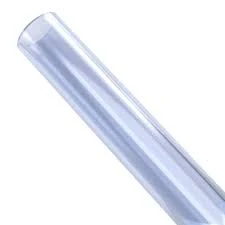Dec . 04, 2024 22:07 Back to list
hdpe gas pipe
Understanding HDPE Gas Pipes A Comprehensive Overview
High-Density Polyethylene (HDPE) gas pipes have become increasingly popular in the transportation of natural gas and other gaseous fuels, thanks to their superior properties and advantages over traditional materials. In this article, we will explore the composition, benefits, applications, and future prospects of HDPE gas pipes.
What is HDPE?
HDPE, or High-Density Polyethylene, is a thermoplastic polymer produced from the polymerization of ethylene. This versatile material is recognized for its excellent strength-to-density ratio, allowing it to withstand various physical stresses while remaining lightweight. HDPE is also known for its chemical resistance, low moisture absorption, and high impact strength.
Properties of HDPE Gas Pipes
HDPE gas pipes are characterized by several key properties that make them ideal for the transportation of gas
1. Durability HDPE pipes can withstand harsh environmental conditions, including temperature fluctuations, UV radiation, and soil movements. This durability means fewer repairs and replacements over time.
2. Corrosion Resistance Unlike metal pipes, HDPE is resistant to corrosion from chemicals and moisture, which prolongs the lifespan of the pipeline and ensures safe gas transportation.
3. Flexibility HDPE pipes are flexible and can be installed in various configurations, making them suitable for applications where traditional rigid pipes may not fit.
4. Lightweight The lightweight nature of HDPE makes transportation and installation easier and more cost-effective compared to traditional materials like steel or cast iron.
5. Smooth Surface The inner surface of HDPE pipes is smooth, reducing friction and allowing for better flow rates of gas, which helps improve overall efficiency.
Applications of HDPE Gas Pipes
hdpe gas pipe

HDPE gas pipes are used in various applications, primarily in the energy sector. Some of the key applications include
1. Natural Gas Distribution HDPE pipes are commonly used in urban and rural natural gas distribution systems, providing reliable service to residential, commercial, and industrial users.
2. Gas Transmission For long-distance transmission of natural gas, HDPE pipes are favorable due to their resistance to pressure and ability to be fused together, creating a continuous pipeline without joints that could leak.
3. Underground Installations The flexibility and corrosion resistance of HDPE make it an excellent choice for underground installations, where environmental factors can affect other materials.
4. Service Lines HDPE pipes are used for service lines that connect main pipelines to consumers, ensuring a safe and efficient gas supply.
Environmental Impact
One of the significant advantages of HDPE gas pipes is their lower environmental impact compared to traditional materials. Because HDPE is recyclable, it can be repurposed at the end of its life cycle, reducing waste and promoting sustainability. Additionally, their energy-efficient production processes minimize carbon emissions, making them a more environmentally friendly option.
Future Prospects
The future of HDPE gas pipes looks promising due to ongoing developments in polymer technology and increasing demands for more efficient energy distribution systems. As energy consumption grows globally, the need for reliable and safe gas pipelines is more important than ever. Furthermore, the trend towards environmentally-friendly materials aligns with global goals for sustainability, positioning HDPE as a leading choice in the industry.
Conclusion
HDPE gas pipes represent a significant advancement in the transportation of natural gas and other gaseous fuels. Their unique properties, including durability, flexibility, and corrosion resistance, make them an ideal choice for various applications. As the energy sector continues to evolve, HDPE gas pipes will play a crucial role in ensuring efficient and safe gas distribution, contributing to a sustainable energy future. With their lower environmental impact and ongoing innovations, HDPE gas pipes are set to become an essential component of modern infrastructural solutions in the years to come.
-
Durable PP Rigid Sheet: Lightweight, Chemical Resistant Solutions
NewsAug.21,2025
-
PVC Grey Sheet for Extraction: Chemical Resistant & Durable
NewsAug.19,2025
-
Durable PVC Pipe Fittings for Plumbing & Irrigation Needs
NewsAug.18,2025
-
HDPE Steel Belt Reinforced Spiral Corrugated Pipe | High Strength
NewsAug.17,2025
-
HDPE Pipe Fittings: Durable, Leak-Proof Solutions
NewsAug.16,2025
-
Premium CPVC Sheet: High-Temp & Chemical Resistant Solutions
NewsAug.15,2025

